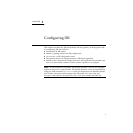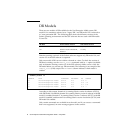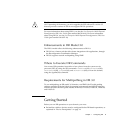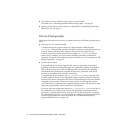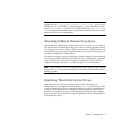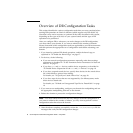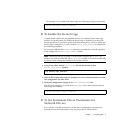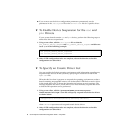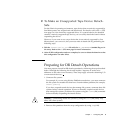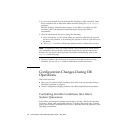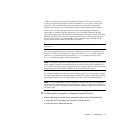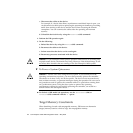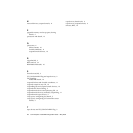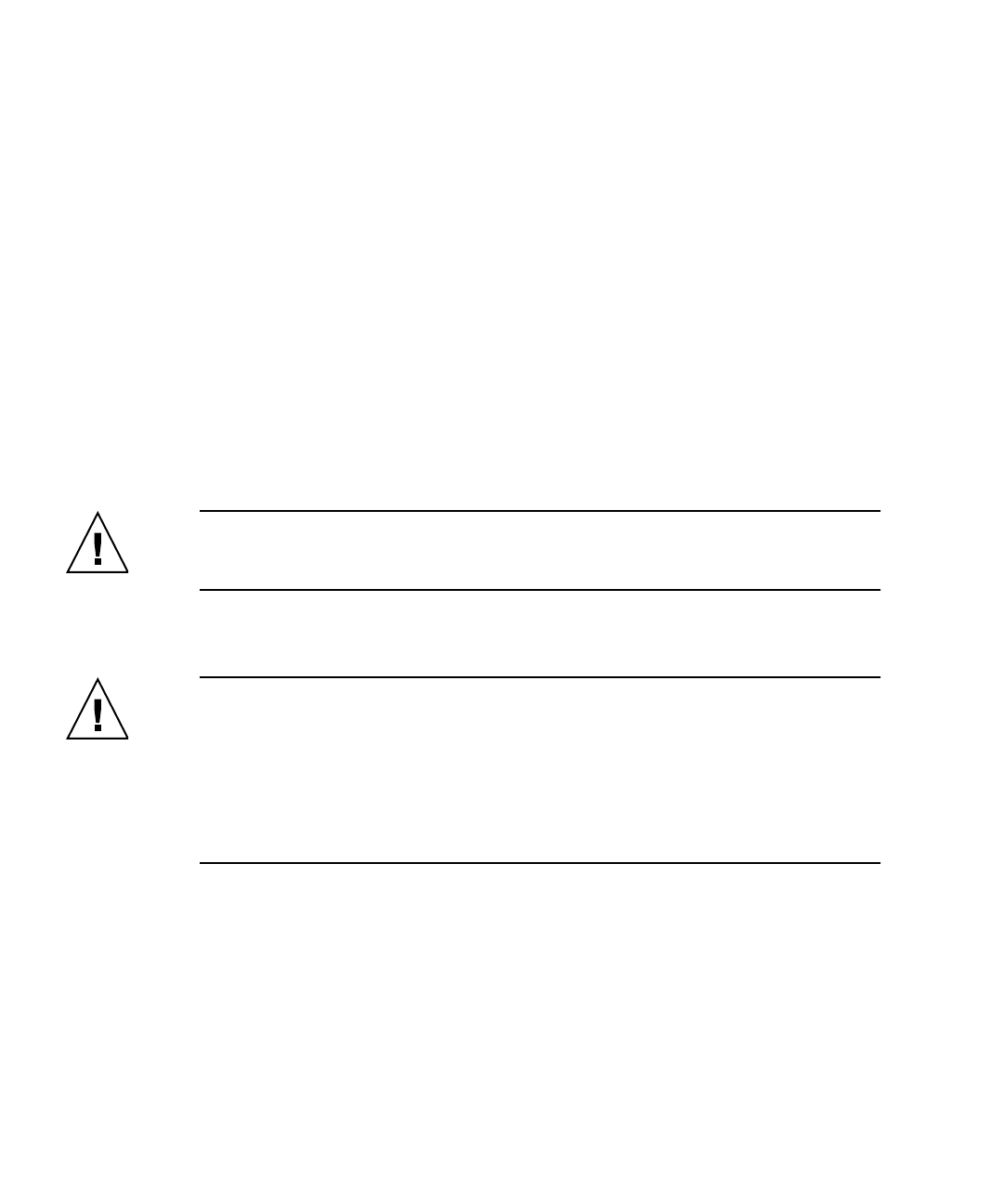
12 Sun Enterprise 10000 DR Configuration Guide • May 2002
c. Disconnect the cables to the device.
For example, if a device that allows asynchronous unsolicited input is open, you
can disconnect its cables prior to quiescing the operating environment, preventing
traffic from arriving at the device and the device from accessing the domain
centerplane. You can reconnect the cables after the operating environment
resumes.
d. Unload the device driver by using the modunload(1M) command.
2. Perform the DR operation again.
3. Do the following:
a. Reload the device by using the modload(1M) command.
b. Reconnect the cables to the device.
c. Inform users that the device can be used again.
d. Restart any processes associated with the device.
Caution – If you attempt a forced quiesce operation while activity is occurring on a
suspend-unsafe device, the domain may hang. However, if the domain hangs, it will
not affect other domains that are running on the Sun Enterprise 10000 system.
▼ To Force a System Quiescence
Caution – Exercise care when using the force option. To successfully force the
operating environment to quiesce, you must first manually quiesce the controller.
Procedures to do that, if any, are device-specific. The device must not transfer any
data, reference memory, or generate interrupts during the operation. Be sure to test
any procedures used to quiesce the controller while it is open before running them
on a production system. Using the force option to quiesce the operating
environment, without first successfully quiescing the controller, can result in a
domain failure and subsequent reboot.
● For Solaris 9 (DR model 3.0) operations, run the deleteboard(1M) or
moveboard(1M) command with the -f option.
Target Memory Constraints
When detaching a board with nonpageable memory, DR locates an alternative
(target) memory board to which to copy the nonpageable memory.



